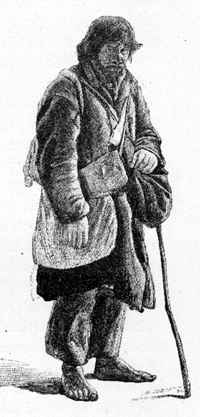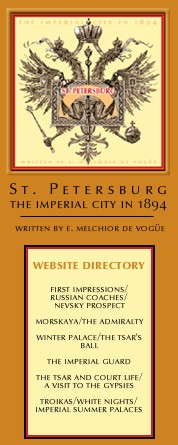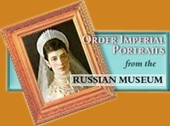TROIKAS, WHITE NIGHTS AND IMPERIAL PALACES
The solitudes are, however, liable to frequent invasion; for if an eclipse or other phenomenon is announced, the ladies of St. Petersburg make up a party to go to Pulkova. They come from Court, and take care to have with them some official of rank. The Imperial Observatory will not be able to refuse to humor their fancy, and troikas bring crowds of noisy visitors, who take possession of the telescopes, and appropriate to themselves the corner of the sky where anything is going on. They have all the mysterious machines explained to them; they turn over the albums full of lunar photographs, and ply the old sorcerers with eager questions. The evening iswound up by supping off the ham and sauer-kraut provided by the wife of the chief astronomer, and in listening to young German ladies playing on the piano one of Schumann's sonatas.
 Another day troikas are ordered early in the morning for a longer expedition to visit the forts of Kronstadt on the other side of the causeway of ice connecting that island with St. Petersburg. These forts are some twenty-five versts off, and it takes two hours to gallop to them across the frozen sea. The only thing to break the monotony of the view are a few black patches, the outlines of the forests bordering the gulf. Posts mark the road on this deceptive plain, and here and there are houses of refuge, the bells of which are rung, during snow-storms, reminding us that this desert too has its dangerous sirocco. Here and there the mast of some vessel stands out against the sky - a prize caught in the ice. Some have their sails spread out to dry, presenting a very quaint appearance in their arrested motion. It is, however, coming back when night is falling that the horror of the landscape becomes most marked. At one moment of the twilight it is impossible to distinguish where the horizon ends and the sky or earth begins. One is imprisoned in a vast milky white crystal, and when one looks fixedly at the horses they seem to be suspended in the ether like those of chariots painted on ceilings. To enable the eye to gain some sense of reality one must look at something living - a flight of crows, the wretched sledge of some unlucky mujik struggling along in the dreary waste, or one of the ice-held vessels, which, though immovable in the morning, now seems in the transparency of the twilight to be moving backward. Words cannot describe the awful gloom of this polar region - darkness, horror, and cold are tangible realities. A nightmare of memories of catastrophes on the road weighs down one's spirit. Yet the true Russian revels in a wild rush through the desolate tracts. He feels all but disembodied, and seems to be flying about in a living dream. "Troika," says Gogol, in a celebrated address to dead souls, " bird-like troika, who invented thee? Thou couldst not have arisen anywhere but among a bold people. But art not thou thyself, 0 Russia, the brave troika, whom none can excel? Where art thou going? Answer! She answers not, she flies along, and surmounts all obstacles!"
Another day troikas are ordered early in the morning for a longer expedition to visit the forts of Kronstadt on the other side of the causeway of ice connecting that island with St. Petersburg. These forts are some twenty-five versts off, and it takes two hours to gallop to them across the frozen sea. The only thing to break the monotony of the view are a few black patches, the outlines of the forests bordering the gulf. Posts mark the road on this deceptive plain, and here and there are houses of refuge, the bells of which are rung, during snow-storms, reminding us that this desert too has its dangerous sirocco. Here and there the mast of some vessel stands out against the sky - a prize caught in the ice. Some have their sails spread out to dry, presenting a very quaint appearance in their arrested motion. It is, however, coming back when night is falling that the horror of the landscape becomes most marked. At one moment of the twilight it is impossible to distinguish where the horizon ends and the sky or earth begins. One is imprisoned in a vast milky white crystal, and when one looks fixedly at the horses they seem to be suspended in the ether like those of chariots painted on ceilings. To enable the eye to gain some sense of reality one must look at something living - a flight of crows, the wretched sledge of some unlucky mujik struggling along in the dreary waste, or one of the ice-held vessels, which, though immovable in the morning, now seems in the transparency of the twilight to be moving backward. Words cannot describe the awful gloom of this polar region - darkness, horror, and cold are tangible realities. A nightmare of memories of catastrophes on the road weighs down one's spirit. Yet the true Russian revels in a wild rush through the desolate tracts. He feels all but disembodied, and seems to be flying about in a living dream. "Troika," says Gogol, in a celebrated address to dead souls, " bird-like troika, who invented thee? Thou couldst not have arisen anywhere but among a bold people. But art not thou thyself, 0 Russia, the brave troika, whom none can excel? Where art thou going? Answer! She answers not, she flies along, and surmounts all obstacles!"
The end of the winter brings about a complete metamorphosis of the capital, which has now another beauty - the beauty of the "white nights," when her palaces and quays are mirrored in the blue waters of the Neva set free by the thaw. The late and sudden summer of St. Petersburg bursts upon us like a thunder-clap. But yesterday there were no buds upon the trees, and yet in a few days one literally sees the leaves pushing forth. This renovation coincides with the time of the so called white nights at the end of May. The sun scarcely disappears for two or three hours, and even when not seen, its presence below the horizon is fully felt - the red glow of its rising immediately succeeding that of its setting. This diffused radiance, filling the whole atmosphere, is neither day nor night, and the fairy-like ethereal light, in which nothing casts any shadow, makes every one look spectral. Nervous people are unable to sleep during these hours of thrilling beauty when twilight is merged in dawn.
This is the time for long excursions to the islands. In the early days of spring nothing could be more fresh and charming than this labyrinth of forests intersected by the numerous arms of the Neva, which wind about among the masses of verdure to flow into the gulf in which they are merged about the so-called Point. The Point is to St. Petersburg what the Bois de Boulogne is to Paris, and Hyde Park to London. Carriages and droskys replace sledges now, and every one of any position goes for a drive on the Point every evening. The equipages drive along the seashore. In the crowd of promenaders, in which the majority are officers, each awaits the vehicle containing those in whom he is interested; the expected carriage arrives, groups gather about the doors, the events of the day or private affairs are discussed, while in the distance the sails of fishing-boats are seen flying rapidly towards Finland, while the sun slowly sinks into the sea behind Oranienbaum. It is a sweet restful time, and nothing marks that it is fleeting, for darkness does not fall. On the drive back, the mists which rise from the surrounding marshes float like a silver canopy above the meadows and forests sleeping in the calm quiet of the white nights. The carriages wind through the lanes intersecting the islands, stopping at the gates of the villas opening on to the road, the country-houses of nobles or wealthy merchants, with fronts facing the canals, and steps leading down into the water, against which boats are resting ready to take their owners from one place to another in this forest Venice. In a few days the families still detained in the capital by business will come to take up their abode here for the summer months, and on every side the walker will hear the music of orchestras playing at coffee concerts; and on every side he will see bright pictures formed by the groups taking their meals out-of-doors on the banks of the canals, or in the gardens; the whole scene bathed in such brilliant brightness that one might almost fancy one's self in Italy.
Those who are connected with the Court spend the summer either at Tsarskoe-Selo or at Peterhof, according to the whim of the sovereign, who sometimes prefers one and sometimes the other. The little towns grouped about the two castles rise in opposite directions, but each is about one hour by rail from St. Petersburg. In the first instance, Peterhof was the Russian Versailles, and Peter the Great endeavored to reproduce there the splendors which had dazzled him when he visited Louis XIV, and saw the park with its far-stretching views, its avenues of clipped yews, and its fountains springing from the mouths of bronze Tritons. The neighborhood of the sea added to Peterhof yet another decorative element, and a fine walk between the beach and the oak forest leads to the dock where the Imperial yachts are moored. Peterhof has been rather neglected in recent reigns; Tsarskoe-Selo is more lively and fuller of memories. In the huge castle built by Rastrelli among the larch woods bordering the lake, one seems to see again the shade of the great Catherine, for it was here she led a life of simple and intellectual pleasures, surrounded by her favorite philosophers and poets. There, too, one may fancy, wanders the shade of the more recent Alexander II, who loved in the summer to collect his courtiers about him here in the intimacy of rural festivities. Near the palace is the Lyceum, recalling the chief glories of Russian literature. This institution long enjoyed a monopoly of the education of the children of the chief nobility of Russia, and the lists of its students contain the names of nearly all those who have distinguished themselves in politics, or who belonged to the romantic galaxy of the first half of the present century. Gorchakov and Pushkin were fellow-pupils there, and in his verses the poet has often described the charms of Tsarskoe. The park, which is skillfully laid out with roads leading to triumphal arches, and little buildings in the Greek Renaissance style so much in vogue in the eighteenth century, is connected with the neighboring park of Pavlovsk, a castle built for Paul I., and now the property of the Grand Duke Constantine. There is perpetual coming and going between the two castles, and carriages dotted about among the trees. The Hussars of the Guard stationed at Tsarskoe keep the whole place gay and free from ennui.
In August of every year, when the Emperor holds a grand review in the camp of Krasnoé Selo, there is a great deal of excitement all about, and one féte succeeds another. The days are filled with marches, shamfights, and improvised encampments, breakfast is taken in tents, and in the evening victors and vanquished go together to the Tsarskoe theatre.
No civilians are admitted, and the scene is unique, with its tier upon tier of gleaming helmets, epaulets, and decorations, beneath a double row of boxes, in which the ladies vie with each other in the beauty and elegance of their costumes. From these Krasnoé manoeuvres, with the combats watched by ladies from their carriages, one gets an idea of what the campaign of the Grand Monarque was like when he besieged the towns of Flanders to the music of violins. Here, as in the Winter Palace, and indeed everywhere in the Russian capital, the curious student of manners may flatter himself that he has a life-like picture of scenes and manners such as he can find nowhere else but in books. It is in this respect that St. Petersburg, the city born of the winter, in which we find not a single ancient monument, supplies us at every turn with a vivid historical lesson. From the moment of one's entry into the capital of Russia, one may feel that one is living once more in the midst of the life of one's ancestors.







